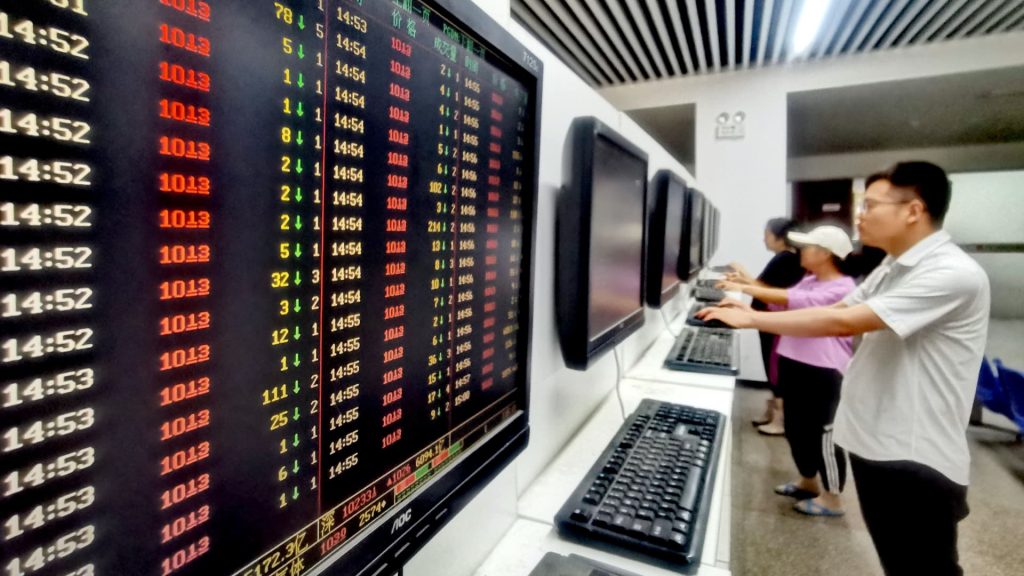It’s getting late into 2024 and the world is still worried about China.
From property woes to sluggish economic data, China appears to be suffering from long Covid. The country is still reeling from the effects of widespread lockdowns since 2020, showcased through weaker GDP, a struggling stock market, and high unemployment — dashing hopes of a quick post-pandemic rebound.
But amid all the uncertainties, this gloom and doom view isn’t shared by all market thinkers.
“Everyone is so down on China. I doubt we can see surprise to the downside with what we’re having coming through, but there’s still so much fantastic innovation that can come from China,” BML Funds CIO Ted Alexander told CNBC’s “Street Signs Asia” last week.
“I think anyone would be good to have exposure to China,” he added.
Wall Street turns bullish
Billionaire investors, including Appaloosa Management founder David Tepper and “Big Short” investor Michael Burry, recently revealed they are sticking to their China bets.
Recent 13F regulatory filings showed Chinese e-commerce giant Alibaba is still Tepper’s top holding, despite trimming his stake by 7% in the company during the second quarter. Alibaba now accounts for 12% of Appaloosa’s $6.2 billion equity holding.
Tepper also added stakes to other Chinese companies, including JD.com, KE Holdings as well as two Chinese exchange-traded funds (iShares China Large-Cap ETF and KraneShares CSI China Internet ETF).
Burry has recently made similar moves. The famed investor loaded up on Alibaba stock in the second quarter, revealing an $11.2 million position in the company. That makes Alibaba Burry’s largest holding, with other Chinese tech stocks including Baidu and JD.com also featuring on Burry’s portfolio.
Meanwhile, BCA Research recently upgraded Chinese onshore stocks to overweight, with China strategist Jing Sima expecting Chinese onshore stocks to passively outperform global equities.
Veteran investor George Boubouras is also taking a chance on China. The K2 Asset Management managing director of research sees opportunity in emerging markets, telling CNBC he has a “tactical and dynamic tilt” on Beijing, and is playing it through “exporters to China, where their earnings are in the developed world.”
But Wall Street isn’t without its China bears. Taking a broader look, Goldman Sachs recently exited its long-term position on copper and cut its price forecast for 2025 by nearly $5,000 per metric ton, citing softening Chinese demand for the red metal. Such pessimism has been felt across Wall Street, with Bank of America slashing its growth forecast for China this year to 4.8%.
Upbeat-ish data
Retail sales in Beijing have also been on an upward trajectory, rising by 2.7% in July from a year ago, according to the National Bureau of Statistics. The surprise jump marked the 18th month of expansion in retail trade.
Summer travel peak
Contrary to popular thought, China’s tourism industry has also experienced a jump this summer. The country tracked around 872 million rail passenger trips on its network during the season, marking a 6.2% surge from a year earlier, according to China’s Ministry of Transport.
Against that backdrop, Beijing projects Chinese air travel to hit a record during 2024. That comes in higher than the 619.6 million air passenger trips seen in 2023. Domestic and international passenger flights are poised to hit 700 million this year, according to Song Zhiyong, head of the Civil Aviation Administration, speaking at the Asia Pacific Summit for Aviation Safety.
Lunar New Year holidays, the Paris Olympic Games, and demand for flights between China and Japan, South Korea, Singapore and Europe have reportedly been key driving factors for growth in Beijing’s tourism industry.
Speaking more broadly, Eric Lin, head of Greater China Research at UBS, told CNBC’s “Street Signs Asia” earlier this month that “Chinese corporates have [had] very solid earnings this year” despite the macro data concerns.
“This is what’s driving support on China stocks in the near term, at least for the end of this year,” he said, adding that his team has a 10% upside to its MSCI China price target for the rest of 2024.

Read the full article here
